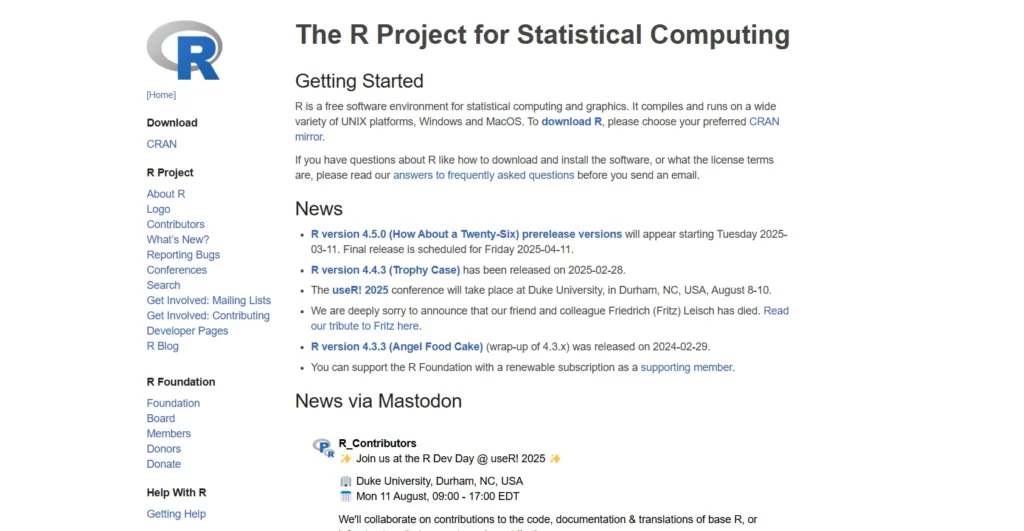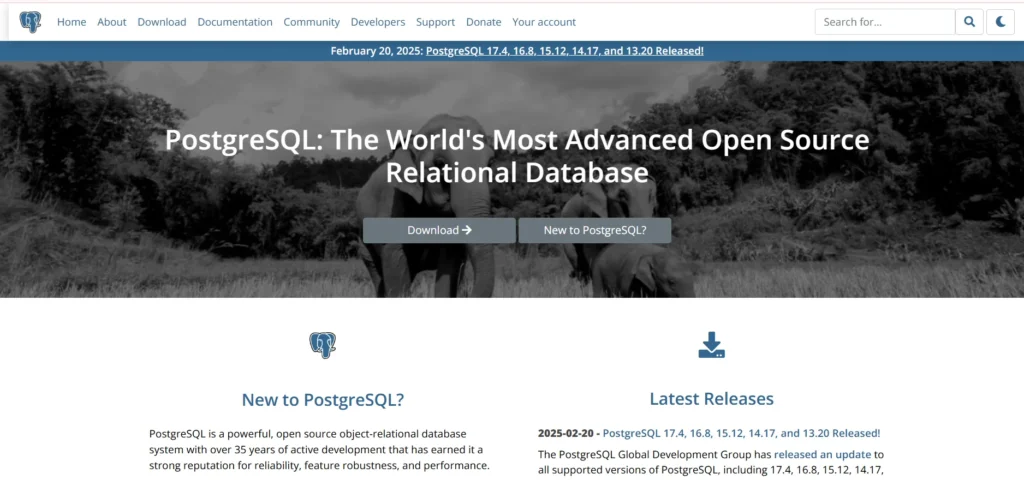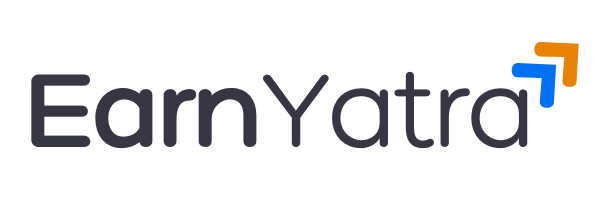Data science has revolutionized industries by enabling businesses to extract valuable insights from vast datasets. To turn these insights into measurable business value, many organizations rely on expert data monetization services that help design and implement strategies for leveraging data as a revenue-generating asset. To achieve this, professionals rely on powerful data science tools that streamline processes like data analysis, visualisation, machine learning, and automation. These tools help in handling big data, predictive modeling, and statistical analysis with efficiency and accuracy.
From open-source platforms to enterprise-level software, each tool offers unique capabilities tailored to different data science needs. Whether you’re a beginner or an expert, choosing the right tool can significantly impact your data-driven decision-making and project success in various domains like healthcare, finance, and e-commerce.
In this blog, we will take a look at the top 10 Data Science Tools.
Types of Data Science Tools
- Data Collection & Storage Tools: SQL, PostgreSQL, MongoDB, Apache Hadoop, AWS S3
- Data Cleaning & Preprocessing Tools: OpenRefine, Pandas (Python), dplyr (R), Trifacta
- Data Analysis & Exploration Tools: Jupyter Notebook, RStudio, SAS, Microsoft Excel
- Machine Learning & AI Tools: TensorFlow, PyTorch, Scikit-learn, XGBoost, RapidMiner
- Big Data Processing Tools: Apache Spark, Apache Flink, Dask, Google BigQuery
- Data Visualisation Tools: Tableau, Power BI, Matplotlib, Seaborn, Plotly
- Cloud & MLOps Tools: Google Cloud AI, AWS SageMaker, MLflow, Kubeflow
- Collaboration & Deployment Tools: GitHub, Docker, Streamlit, Flask, FastAPI
Challenges in Using Data Science Tools
- Data Quality Issues: Inconsistent, incomplete, or biased data can impact analysis.
- Complexity of Tools: Some tools require advanced programming and statistical knowledge.
- Scalability Limitations: Handling large datasets efficiently is challenging for some tools.
- Integration Difficulties: Compatibility issues between different platforms and tools.
- Computational Costs: High-performance computing and cloud services can be expensive.
- Security & Privacy Concerns: Protecting sensitive data in AI and ML projects.
- Steep Learning Curve: Many tools require extensive training and expertise.
- Lack of Automation: Some tools require manual tuning for optimal results.
- Real-time Processing Limitations: Some tools struggle with real-time data streaming.
- Limited Interpretability: AI models can be black-box systems with unclear decision-making.
List of Top 10 Data Science Tools
1. Python

Python represents a versatile open-source programming language that serves as a standard tool throughout the data science field. The language provides a comprehensive framework including Pandas for data manipulation along with NumPy for numerical operations and Scikit-learn for machine learning capabilities.
Python suits both beginners and experienced developers because it facilitates deep learning through TensorFlow and PyTorch and uses Jupyter Notebook for interactive coding. The dynamic nature of Python enables automatic control through statistical analysis alongside visual presentation using Matplotlib and Seaborn libraries.
Python maintains its position as a top language for industrial use because of widespread adoption and active community support in data analysis, machine learning and artificial intelligence together with big data applications throughout various industries. For those looking to build or strengthen their skills, platforms like DATACAMP provide comprehensive, hands-on training tailored to real-world applications.
Features:
- Extensive Libraries: Pandas, NumPy, and Scikit-learn for data manipulation and ML.
- AI & Deep Learning: Supports TensorFlow, PyTorch, and Keras.
- Automation & Scripting: Used for web scraping, data pipelines, and task automation.
- Cross-Platform Compatibility: Runs on Windows, macOS, and Linux.
Best For:
- Data scientists, machine learning engineers, and developers working on AI and automation.
Pricing:
- Open-source (Free).
2. R

R stands as a favored tool for data visualization and statistical computing among researchers and analysts. The platform packs an extensive collection of packages including ggplot2 for visual representation and dplyr for data manipulation alongside caret for machine learning capabilities.
R demonstrates strength in managing both structured and unstructured data while executing hypothesis testing and developing predictive models. RStudio functions as the main development tool for delivering an approachable interface to users who code and produce visual outputs as well as reports.
Researchers throughout academia rely on R along with scientists in bioinformatics and financial analysts who work alongside social scientists. R retains its position as the primary tool for complex statistical modeling and data analysis although its learning process takes more effort than Python’s.
Features:
- Advanced Statistical Analysis: Strong support for hypothesis testing and regression modeling.
- Data Visualisation: ggplot2, lattice, and base R for custom visualisation.
- Machine Learning: Caret and mlr packages for predictive modeling.
- RMarkdown: Seamless reporting and documentation generation.
Best For:
- Statisticians, data analysts, and researchers needing powerful statistical tools.
Pricing:
- Open-source (Free).
3. Jupyter Notebook

Jupyter Notebook serves as an open-source web-based IDE specifically designed for data science work along with machine learning applications and exploratory analysis. The system enables users to generate Python or R code through its organised cell-based execution interface.
Notebooks enable Matplotlib and Seaborn inline visualisations as well as markdown documentation through their cloud collaboration features on Google Colab. Jupyter functions with Apache Spark and big data tools through an interface which enables researchers to reproduce their work.
The interactive features of Jupyter Notebooks make it an exceptional tool for machine learning model prototyping along with data transformation work and insight sharing with general audiences. Companies and academic institutions have widely adopted Jupyter for their work.
Features:
- Interactive Coding: Execute Python, R, and Julia code in a notebook format.
- Inline Visualisation: Supports Matplotlib, Seaborn, and Plotly for instant data visualisation.
- Cloud Integration: Compatible with Google Colab and AWS SageMaker.
- Reproducibility: Enables collaborative research and data science projects.
Best For:
- Academics, data scientists, and ML engineers need an interactive coding environment.
Pricing:
- Open-source (Free).
Suggested Read: eCommerce analytics tools
4. Apache Spark

Apache Spark operates as an open-source big data processing engine which provides powerful distributed computing across large datasets. Apache Spark supports various programming languages including Python, Scala, Java and R and its Resilient Distributed Dataset (RDD) architecture delivers swift cluster processing for both real-time and batch data operations.
Spark’s machine learning capability through MLlib enables graph processing using GraphX and real-time analytics with Spark Streaming streaming functions which drive its usage for AI and IoT as well as large-scale data engineering.
Spark achieves its status as a premier big data analytics solution through seamless integration with Hadoop Kubernetes and cloud platforms.
Features:
- Distributed Computing: Processes massive datasets across multiple nodes.
- In-Memory Processing: Faster than Hadoop’s disk-based processing.
- Built-in ML Library: MLlib for scalable machine learning applications.
- Real-time Analytics: Spark Streaming for processing real-time data streams.
Best For:
- Big data engineers, AI developers, and enterprises handling large-scale data.
Pricing:
- Open-source (Free); Cloud-based managed services may incur costs.
5. TensorFlow & PyTorch
TensorFlow and PyTorch are the two most popular deep learning frameworks used for building neural networks and AI applications.
TensorFlow, developed by Google, offers an extensive ecosystem for scalable machine learning, including TensorFlow Extended (TFX) for production workflows and TensorFlow Lite for mobile deployment. PyTorch, developed by Meta, is known for its dynamic computation graph, making it preferred for research and prototyping.
Both frameworks support GPUs for accelerated training, reinforcement learning, and NLP applications. While TensorFlow is widely used in production, PyTorch’s ease of use makes it a favorite in academia and experimental AI research.
Features:
- Deep Learning Frameworks: Support for neural networks, NLP, and reinforcement learning.
- GPU Acceleration: Optimised for high-performance model training.
- Model Deployment: TensorFlow Serving and TorchScript for scalable AI applications.
- Community & Pre-trained Models: Access to TensorFlow Hub and PyTorch Hub.
Best For:
- AI researchers, machine learning practitioners, and deep learning engineers.
Pricing:
- Open-source (Free).
6. Tableau & Power BI
Tableau and Power BI are leading data visualization and business intelligence tools. Tableau, known for its user-friendly drag-and-drop interface, enables interactive data analysis and storytelling through dashboards.
Power BI, developed by Microsoft, integrates seamlessly with Excel, Azure, and other Microsoft products, making it ideal for enterprise solutions. Both tools support data blending, real-time analytics, and AI-powered insights.
They connect to multiple data sources, from SQL databases to cloud storage, enabling users to transform raw data into actionable business intelligence. These tools are widely used across industries for decision-making, reporting, and predictive analytics.
Features:
- Drag-and-Drop Interface: Simplifies data Visualisation without coding.
- Real-time Dashboards: Connects to live databases for up-to-date insights.
- AI-Powered Analytics: Smart insights and anomaly detection.
- Data Integration: Works with Excel, SQL, cloud storage, and APIs.
Best For:
- Business analysts, financial professionals, and marketing teams needing visual insights.
Pricing:
- Tableau: Contact sales
- Free account – Free
- Power BI Pro – $10.00 user/month
- Power BI Premium Per User – $20.00 user/month
- Power BI Embedded – Variable
7. SQL & PostgreSQL

SQL (Structured Query Language) is the standard language for managing and querying relational databases. PostgreSQL, an advanced open-source SQL database, is known for its extensibility, ACID compliance, and support for complex queries.
SQL enables data scientists to extract, clean, and manipulate structured data efficiently. PostgreSQL supports JSON, GIS data, and machine learning extensions, making it versatile for both transactional and analytical workloads.
With integrations in Python, R, and BI tools, SQL remains essential for ETL (Extract, Transform, Load) processes, business intelligence, and large-scale data storage solutions in enterprises and startups alike.
Features:
- Advanced Querying: Supports complex joins, indexing, and subqueries.
- ACID Compliance: Ensures data integrity and reliability.
- JSON & GIS Support: Stores and queries semi-structured and geographical data.
- High Scalability: Handles large datasets efficiently with partitioning and parallel queries.
Best For:
- Database administrators, data engineers, and analysts managing structured data.
Pricing:
- ART (A Reporting Tool): Free
- check_pgactivity: Free
- check_postgres.pl: Free (BSD Licensed)
- DB Doc for PostgreSQL: $35
- DbFace: $9-$49/month
- Draxlr: Starts at $39
- Holistics: Varies
- Navicat Charts Creator: $219
- Nucleon BI Studio: $500
- Nucleon Data Science Studio: $500
- Orange: Free
- pgBadger: Free
- pgCluu: Free
- pgDash: Starting from $100/month
- pgmetrics: Free
- PostgreSQL Dashboard: Free
- PostgreSQL Dashboard by the Dashboard Builder: Varies
- PoWA: Free
- QueryClips:
- Individuals: $9 / month
- Small teams: $60 / month
- Enterprise: $149 / month
- QueryTree: Free 14-day trial and then multiple plans starting at $29 per month
- SeekTable.com: Free for personal usage
- Slemma: Starting from $29/month
- SQLPage: Free
- Ubiq:
- $18/month for 1 user
- $45/month for 3 users
- $75/month for 5 users
- Custom pricing available
- Windward Studios: $209/month and up
8. Google Cloud AI & AWS SageMaker
Google Cloud AI and AWS SageMaker are cloud-based machine learning platforms designed for scalable AI model training and deployment. Google Cloud AI offers AutoML for no-code ML development, Vertex AI for custom model building, and TensorFlow Extended (TFX) for end-to-end pipelines.
AWS SageMaker provides tools for data labeling, model tuning, and deployment with built-in Jupyter notebooks. Both platforms support deep learning, computer vision, NLP, and reinforcement learning.
They integrate with cloud storage, big data tools, and enterprise applications, enabling businesses to build AI-driven solutions without extensive infrastructure management.
Features:
- No-Code/Low-Code ML: AutoML tools for building models without coding.
- Scalable Training: Distributes AI model training across cloud GPUs and TPUs.
- End-to-End MLOps: Automated model tuning, deployment, and monitoring.
- Integration: Connects with cloud storage, SQL, and big data tools.
Best For:
- Enterprises, AI startups, and developers building scalable machine learning solutions.
Pricing:
- Google Cloud AI: Pay-as-you-go model.
- AWS SageMaker: Pricing based on usage (compute, storage, and inference).
9. Apache Hadoop

Apache Hadoop is a powerful open-source framework for storing and processing massive datasets across distributed clusters. It consists of the Hadoop Distributed File System (HDFS) for scalable storage, MapReduce for parallel processing, and YARN for resource management.
Hadoop is widely used in big data ecosystems, enabling organizations to process unstructured and structured data efficiently. It integrates with tools like Apache Hive for SQL-based querying and Apache Spark for faster in-memory computation.
Despite competition from cloud-based solutions, Hadoop remains a backbone of data lakes and large-scale analytics in finance, healthcare, and e-commerce.
Features:
- Distributed Storage: HDFS for large-scale data storage.
- Parallel Processing: Uses MapReduce to process vast datasets.
- Data Lake Compatibility: Works with Hive, Pig, and Spark for data querying.
- Scalability: Easily adds nodes for expanding data processing capabilities.
Best For:
- Enterprises managing big data, data engineers, and analytics teams.
Pricing:
- Per Node– most common
- Per TB
- Freemium product with or without subscription-only tech support
- All-in-one package deal including all hardware and software
- Cloud-based service with its own broken down pricing options- can essentially pay for what you need or pay as you go
10. RapidMiner

RapidMiner is a no-code/low-code data science platform designed for machine learning, data mining, and predictive analytics. It provides a visual workflow interface, eliminating the need for extensive coding.
With built-in automation for data preparation, feature engineering, and model evaluation, RapidMiner accelerates the data science lifecycle. It supports integration with Python, R, and cloud services, enabling seamless model deployment.
Popular among business analysts and non-technical users, RapidMiner is used for fraud detection, customer segmentation, and sentiment analysis. Its prebuilt algorithms and drag-and-drop interface make AI accessible to enterprises without deep technical expertise.
Features:
- No-Code Machine Learning: Drag-and-drop model building.
- Automated Data Preprocessing: Cleans and prepares datasets with AI.
- Model Deployment: One-click deployment to production environments.
- Explainable AI: Built-in interpretability for ML models.
Best For:
- Business analysts, marketers, and enterprises looking for accessible AI solutions.
Pricing:
- RapidMiner Studio Free: Free
- RapidMiner Studio Small: $2500/year
- RapidMiner Studio Medium: $5000/year
- RapidMiner Studio Large: Custom pricing
- RapidMiner Server: Custom Pricing
Ending Thoughts
Data science tools play a crucial role in extracting insights, building predictive models, and driving business decisions. From data collection and preprocessing to visualisation and machine learning, these tools enhance efficiency and scalability. However, challenges such as data quality issues, tool complexity, integration difficulties, and computational costs can hinder their effectiveness.
Choosing the right tool depends on the specific use case, technical expertise, and scalability requirements. As AI and automation evolve, future data science tools will become more user-friendly, efficient, and integrated. Organisations must invest in training and infrastructure to fully leverage these tools for innovation and competitive advantage. With continuous advancements, data science will remain a key driver of technological and business transformation.
FAQs
Are there free data science tools available?
Yes, tools like Python, R, Jupyter Notebook, KNIME, and Apache Spark are open-source and free to use.
Do I need coding knowledge to use data science tools?
Some tools like Tableau and RapidMiner require minimal coding, while others like Python and R require programming knowledge.
Can I use Excel for data science?
Excel is useful for basic data analysis and visualisation, but it lacks advanced capabilities like machine learning and big data processing.
Are cloud-based data science tools available?
Yes, platforms like Google Cloud AI, AWS SageMaker, and Microsoft Azure ML provide cloud-based solutions for data science and AI.


